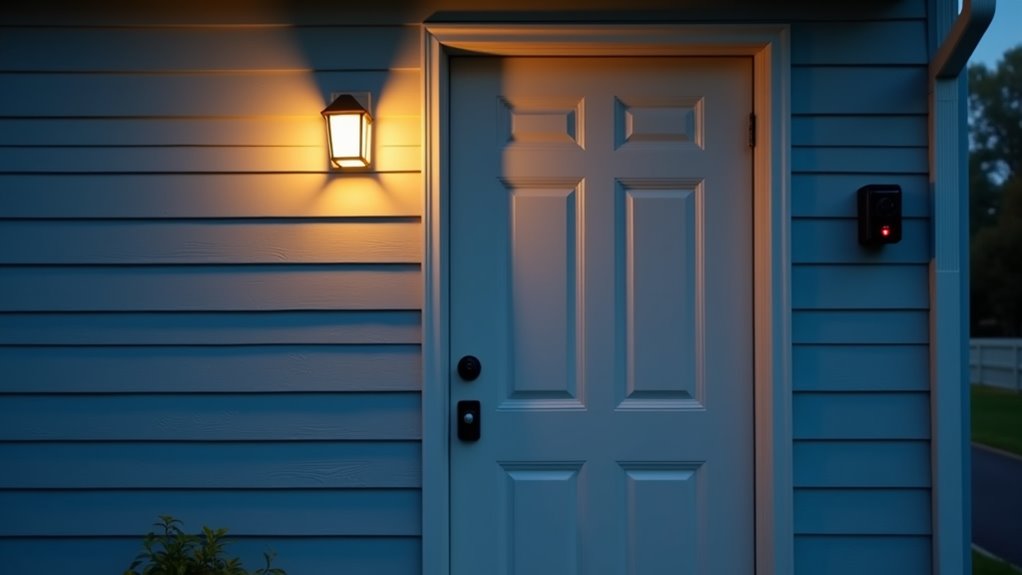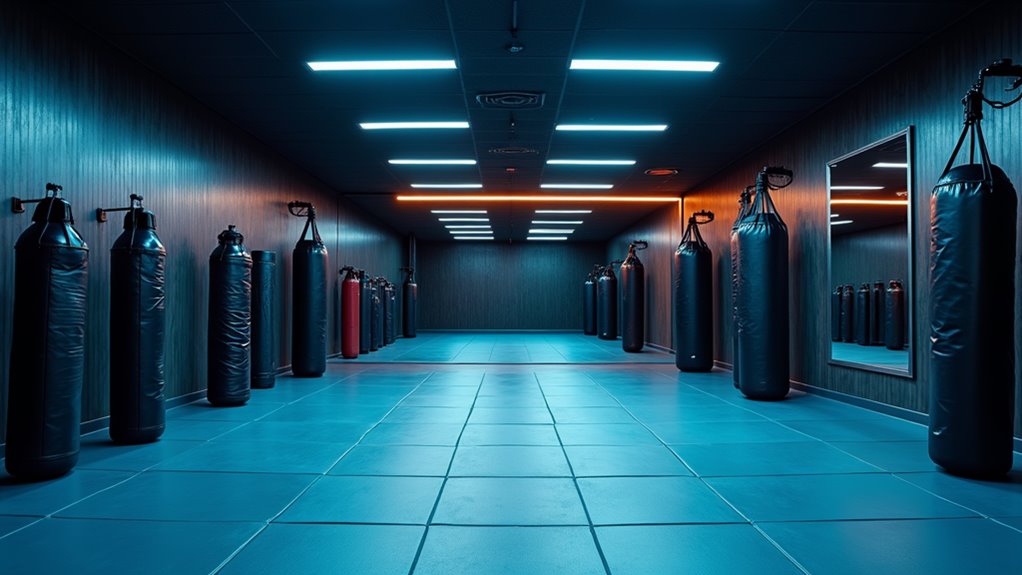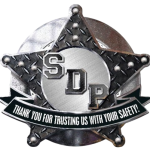Your safety matters, so stay alert and trust your instincts when something feels off. Carry a personal alarm, avoid isolated areas, and keep your phone charged and accessible. Learn basic self-defense moves through local classes, focusing on quick escape techniques rather than confrontation. Make your home secure with proper locks, motion-sensor lights, and regular security checks. When traveling, research destinations carefully, share your plans with trusted contacts, and maintain awareness of your surroundings. Remember to set clear boundaries and communicate discomfort assertively – these simple steps can greatly boost your personal protection. Let’s explore more ways to enhance your safety toolkit.
Peace of Mind

Building a strong sense of personal safety starts with setting clear daily boundaries, like confidently saying “no” when you’re uncomfortable and trusting your instincts in every situation.
When you’re traveling, you’ll feel more secure by planning ahead, sharing your itinerary with trusted friends, and keeping emergency contacts easily accessible on your phone.
Your home should be your sanctuary, so make it safer by installing good locks, maintaining well-lit entrances, and creating a routine that includes regular security checks of windows and doors. Consider using a 2n1 Personal Burglar Alarm to enhance your home’s security and deter intruders effectively.
For additional peace of mind, consider carrying a Personal Panic Alarm to use in panic situations for immediate assistance.
Confident Personal Boundaries Daily
Setting and maintaining personal boundaries helps create a foundation of safety in your daily life.
You’ll need to practice assertive communication, which means clearly expressing your comfort levels and limits with others, whether they’re strangers, coworkers, or even friends. Don’t be afraid to tell someone they’re standing too close or making you uncomfortable.
When it comes to personal space, you’ve got to trust your instincts and enforce your boundaries consistently. This means keeping a safe distance from others in public spaces, positioning yourself near exits when possible, and being firm about your physical boundaries.
If someone’s behavior makes you uneasy, you don’t need to be polite – your safety comes first. Remember, setting boundaries isn’t rude; it’s an essential part of protecting yourself.
Security During Travel
When traveling alone, maintaining vigilance and preparation creates a strong foundation for personal safety. During your solo adventures, you’ll want to research your destination thoroughly, choose well-reviewed accommodations in safe areas, and always keep emergency contacts updated on your whereabouts.
Before commencing your journey, take essential travel precautions like sharing your itinerary with trusted friends or family members, making copies of important documents, and downloading offline maps to your phone.
You’ll feel more secure if you pack a small personal alarm, keep your valuables close, and avoid displaying expensive items that might attract unwanted attention.
When you’re exploring new places, trust your instincts, stay aware of your surroundings, and don’t hesitate to change plans if a situation feels uncomfortable.
Safer Home Environment
Creating a safer home environment starts with understanding potential vulnerabilities in and around your living space.
You’ll want to evaluate your home security from both inside and outside perspectives, making sure you’ve covered all potential weak points that could compromise your safety.
- Install bright motion-sensor lights around your property’s perimeter, especially near entrances and dark corners.
- Join your local neighborhood watch program and stay connected with trusted neighbors who can keep an eye on your home.
- Reinforce all door frames with metal plates and install deadbolts on every exterior door.
- Keep your windows locked and consider adding security film to ground-floor glass.
Trust Your Gut Instincts
Your intuition serves as one of the most powerful self-defense tools you possess. When those gut feelings signal that something’s not right, don’t ignore them or try to rationalize them away.
Your brain processes countless subtle details that you mightn’t consciously notice, leading to these instinctive responses that can protect you from danger.
If you’re walking alone and sense someone’s following you, don’t second-guess yourself – take immediate action by heading to a crowded area or calling someone you trust.
You’ll never regret being too cautious, but you might regret ignoring your inner warning system. Remember, those uncomfortable feelings aren’t just random – they’re your body’s natural alert system telling you to pay attention and respond.
Trust yourself; you’re often right about these feelings. Consider carrying a keychain alarm with light as an additional layer of protection; its 130db alarm and flashing light can deter potential threats.
Learn Self-Defense Techniques

Building on your natural instincts, self-defense training adds practical skills to your safety toolkit. When you enroll in self defense classes, you’ll learn essential moves that can help you escape dangerous situations, like breaking free from common holds and delivering strategic strikes to vulnerable areas.
You’ll also develop confidence in your ability to protect yourself, which shows in your body language and can deter potential threats.
Start with basic practical techniques that focus on getting away from an attacker rather than engaging in a prolonged fight. These include effective blocking methods, quick escape maneuvers, and simple strikes that don’t require exceptional strength.
Watch for Unusual Movements
While walking in public spaces, staying alert to suspicious movements around you can make the difference between safety and danger.
You’ll want to scan your surroundings regularly, paying attention to anyone who’s exhibiting unusual behavior like following too closely, suddenly changing direction when you turn, or lingering without purpose in isolated areas.
Trust your instincts when you notice suspicious activity, such as people who seem to be working together to box you in or someone who’s pretending to talk on their phone while watching you.
If you spot anything concerning, don’t second-guess yourself – change your route, head to a populated area, or step into a nearby business.
You should also keep an eye on shadows and reflections in windows, which can alert you to movement behind you.
Answers to Common Questions
What Specific Apps Are Recommended for Women’s Safety Tracking?
You’ll find reliable safety apps like Life360, bSafe, and Noonlight helpful. They offer real-time tracking features, emergency alerts, and SOS buttons. Share your location with trusted contacts for added protection.
How Can Women Protect Themselves While Using Rideshare Services?
Before your ride arrives, verify the license plate and driver’s photo. Share your trip with trusted contacts, sit in the back seat, and don’t share personal information. Keep your rideshare safety app active throughout.
What Legal Self-Defense Weapons Can Women Carry in Public Spaces?
Like a shield in modern times, you’ll find protection with pepper spray and personal alarms. You can also carry tactical pens, kubotans, and whistles – just check your local laws first for specifics.
When Walking Alone, Which Areas of Parking Lots Are Safest?
You’ll be safest in well lit areas near main entrances and store fronts. Choose spots with clear sight lines across the parking lot design, avoiding isolated corners or areas between large vehicles.
How Should Women Respond if Being Followed While Driving?
Like a fox outmaneuvering its predator, don’t head home. Drive to a police station, use emergency maneuvers if needed, and call 911. Keep your doors locked and stay on well-lit, busy streets.
Bottom Line
You’re better safe than sorry when it comes to personal protection, so don’t let your guard down even for a minute. Remember to stay aware of your surroundings, trust those gut feelings when something doesn’t feel right, and keep practicing those self-defense moves you’ve learned. By making safety a regular part of your daily routine, you’ll feel more confident and prepared as you navigate through your world.




